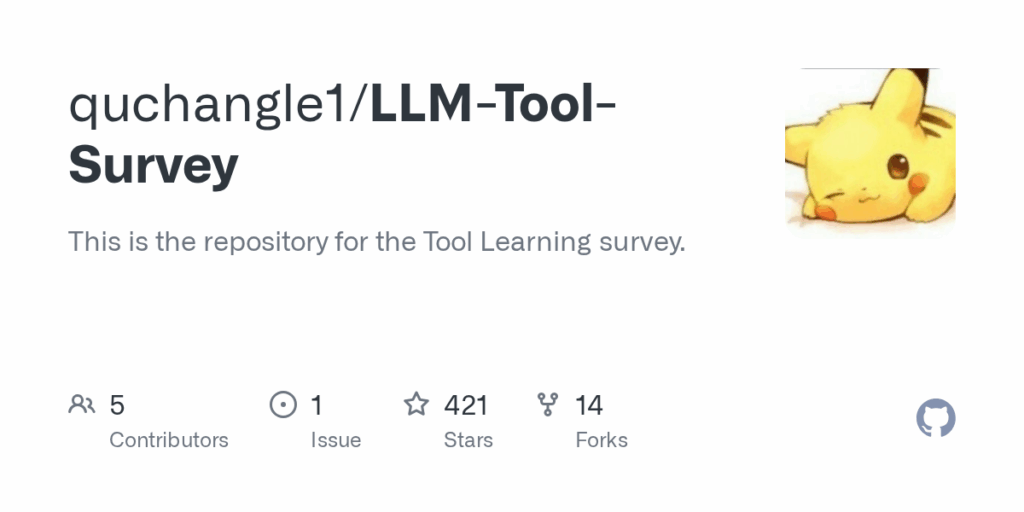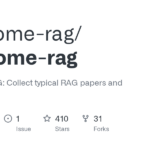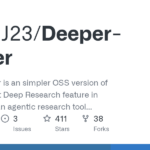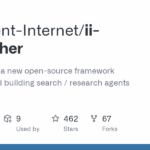LLM Tool Survey
Basic Information
This repository collects and organizes the literature on tool learning with large language models. It accompanies the authors' survey paper and serves as a curated bibliography and reference for research on how LLMs integrate and learn to use external tools. The README presents a clear motivation for tool learning, a taxonomy of methods, and a workflow diagram that breaks the problem into four stages: task planning, tool selection, tool calling, and response generation. It aggregates representative papers across benefits, methods, benchmarks, and evaluation protocols. The repo also summarizes benchmarks, evaluation metrics, challenges, future directions, and other resources, and includes citation information for the accepted survey paper. The collection aims to reduce fragmentation in the literature and provide a structured entry point for researchers and practitioners interested in tool-augmented LLMs.








